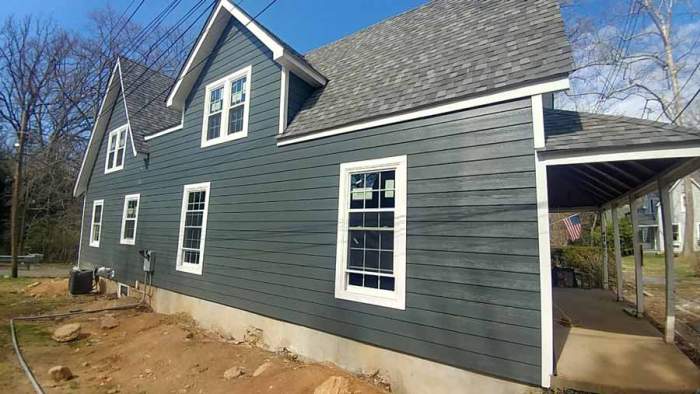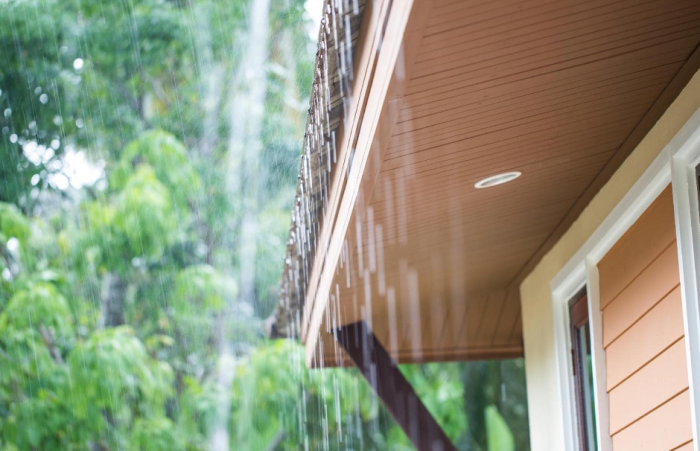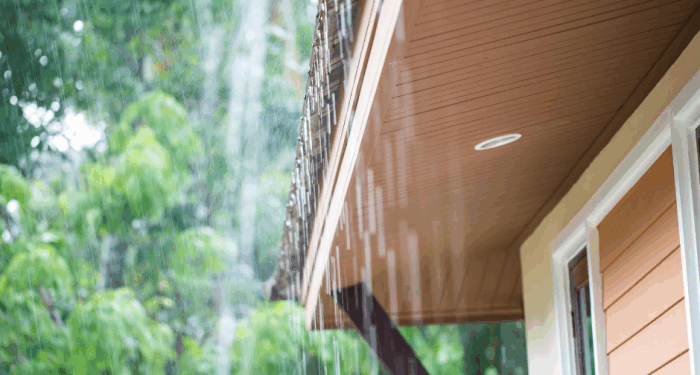As you explore the world of weather-resistant siding for your region, you'll uncover the key elements that play a crucial role in protecting your home. From understanding different siding materials to considering regional factors, this guide will equip you with the knowledge needed to make the best choice for your home.
Factors to Consider
When it comes to choosing weather-resistant siding for your home, considering your region's climate is crucial. The type of siding you choose should be able to withstand the specific weather conditions in your area to ensure durability and longevity.
Key Factors to Consider
- Material Durability: Different siding materials have varying levels of durability. For example, vinyl siding is known for its low maintenance and resistance to moisture, while fiber cement siding is more durable and can withstand harsh weather conditions.
- Maintenance Requirements: Some siding materials require more maintenance than others. Wood siding, for instance, needs regular painting or staining to protect it from the elements, while metal siding is low maintenance and resistant to rot and pests.
- Insulation Properties: The insulation provided by the siding can impact energy efficiency. Insulated siding can help regulate indoor temperatures and reduce energy costs, especially in regions with extreme weather conditions.
- Resistance to Moisture: Regions with high humidity or frequent rain require siding materials that are resistant to moisture. Choosing moisture-resistant siding can prevent mold, mildew, and water damage to your home.
Impact of Different Weather Conditions
- Hot and Dry Climates: In arid regions, siding materials like stucco or stone are ideal as they can withstand intense heat and UV exposure.
- Cold and Snowy Climates: For areas with cold winters and heavy snowfall, insulated siding or materials like fiber cement and engineered wood are recommended for their durability and resistance to moisture.
- Coastal Regions: Coastal areas with salt exposure require siding materials that are resistant to corrosion. Vinyl siding or fiber cement with proper coatings can withstand the salty air and high winds.
- High Wind Areas: Regions prone to strong winds need siding materials that can withstand wind pressure. Metal siding or fiber cement are good options for their strength and resistance to impact.
Siding Material Options

When it comes to choosing weather-resistant siding for your region, there are several material options available in the market. Each siding material has its own characteristics in terms of durability and resistance to different weather conditions.
Vinyl Siding
Vinyl siding is a popular choice due to its low maintenance and durability. It is resistant to moisture, rot, and insects, making it a great option for areas with high humidity or frequent rain. However, vinyl siding can crack or fade over time, especially in extreme temperatures.
Fiber Cement Siding
Fiber cement siding is known for its strength and resistance to fire, moisture, and pests. It is a durable option that can withstand harsh weather conditions, making it ideal for regions with strong winds or heavy rain. However, fiber cement siding can be more expensive than other materials and may require professional installation.
Wood Siding
Wood siding offers a natural and traditional look to a home. It is relatively easy to repair and can be painted or stained to match your aesthetic preferences. However, wood siding is prone to rot, mold, and insect damage, especially in wet or humid climates.
Regular maintenance, such as sealing and painting, is necessary to prolong the lifespan of wood siding.
Metal Siding
Metal siding, such as steel or aluminum, is highly durable and resistant to fire, moisture, and pests. It is a low-maintenance option that can last for decades with proper care. Metal siding is also eco-friendly and recyclable, making it a sustainable choice for environmentally conscious homeowners.
However, metal siding can dent or scratch easily, and it may require insulation to prevent heat loss in colder regions.
Regional Considerations
When choosing weather-resistant siding for your region, it is crucial to consider the specific weather patterns that your area experiences. Researching the climate conditions in your region will help you determine the best siding material that can withstand the elements and protect your home effectively.
Researching Weather Patterns
Before selecting siding for your home, take the time to research the typical weather patterns in your region. Consider factors such as temperature fluctuations, humidity levels, precipitation amounts, and exposure to elements like wind, sun, or saltwater if you live near the coast.
Understanding these weather conditions will guide you in choosing the most suitable siding material for your specific climate.
Checklist for Choosing Siding Material
To assist homeowners in determining the best siding material for their region, here is a checklist to consider:
- Climate conditions in your area
- Level of humidity and precipitation
- Temperature ranges throughout the year
- Exposure to elements (wind, sun, saltwater)
- Potential for extreme weather events (hurricanes, tornadoes, snowstorms)
Ideal Siding Materials for Different Climate Zones
Depending on the climate zone you reside in, certain siding materials may be more suitable than others. Here are examples of siding materials ideal for different climate zones:
- Coastal Areas: Fiber cement siding or vinyl siding that can withstand high humidity, salt exposure, and strong winds.
- Desert Regions: Stucco or stone veneer siding that provides insulation against extreme heat and minimal moisture absorption.
- Cold Climates: Engineered wood siding or insulated vinyl siding that offer thermal resistance and protection against freezing temperatures.
Maintenance and Longevity

Proper maintenance is key to ensuring the longevity of weather-resistant siding. Different types of siding materials require specific care routines to extend their lifespan. Understanding the maintenance requirements and how to care for your siding can help you make an informed decision.
Maintenance Requirements for Different Types of Weather-Resistant Siding
- Vinyl Siding: Vinyl siding is relatively low maintenance, requiring periodic cleaning with a mixture of water and mild soap. Avoid using harsh chemicals or abrasive tools that can damage the surface.
- Fiber Cement Siding: Fiber cement siding should be inspected annually for any signs of damage or wear. Repainting may be necessary every 5-10 years to maintain its appearance and protect it from the elements.
- Wood Siding: Wood siding needs regular staining or painting to protect it from moisture and UV damage. Inspect for rot or pests regularly and address any issues promptly.
- Metal Siding: Metal siding is durable but can be prone to corrosion in certain environments. Regular cleaning and inspection for rust spots are essential to prolong its lifespan.
Guide on Extending the Lifespan of Siding
- Regular Cleaning: Keeping your siding clean from dirt, debris, and mold can prevent damage and prolong its lifespan.
- Inspect and Repair: Regularly inspect your siding for any signs of damage, such as cracks, rot, or holes, and address them promptly to prevent further deterioration.
- Proper Installation: Ensure that your siding is installed correctly to prevent water infiltration and damage over time.
- Maintain Landscaping: Trim trees and bushes near your siding to prevent damage from branches and foliage rubbing against the surface.
Correlation Between Initial Cost and Long-Term Durability
The initial cost of weather-resistant siding can vary depending on the material used. While some materials may have a higher upfront cost, they often offer better long-term durability and require less maintenance, ultimately saving you money in the long run.
Investing in high-quality siding can pay off in terms of longevity and overall performance.
Summary
In conclusion, choosing weather-resistant siding tailored to your region is not just about durability but also about enhancing the longevity and aesthetics of your home. By following the guidelines laid out in this guide, you can confidently select the perfect siding that will withstand the test of time and weather.
Questions and Answers
Can I use the same siding material regardless of my region's climate?
It's crucial to choose a siding material that is specifically designed to withstand the weather conditions in your region. Different climates require different types of weather-resistant siding for optimal protection.
How do I know which siding material is best suited for my region?
Researching the weather patterns in your region and consulting with local experts can help you determine the most suitable siding material. Factors such as humidity, temperature fluctuations, and precipitation levels play a significant role in this decision.
Is regular maintenance necessary for weather-resistant siding?
Yes, regular maintenance is essential to ensure the longevity and performance of weather-resistant siding. Following manufacturer recommendations and conducting routine inspections can help identify any issues early on and prevent costly repairs in the future.



